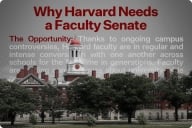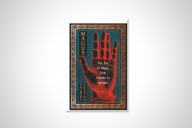You have /5 articles left.
Sign up for a free account or log in.
For a while this spring, it felt as if we might have turned a corner. Things seemed to be entering a new phase that I thought of as "pre-post-COVID." The disrupted routines and ambient strain of the previous year did not vanish. But the masks started coming off, and you could imagine being able to refer to the pandemic in the past tense without a sense of tempting fate.
Three or four months on, the pre-post-COVID era looks to continue indefinitely. The worst is over, let's hope, but the intensive care units are overcrowding again. It's reasonable to make travel plans for November or December but not without a twinge of apprehension. I keep recalling a scene in the comedian and musician Bo Burnham'' Netflix special Inside. A one-man multimedia production he created in isolation during the lockdown, it would earn him a place in posterity if only for the song "Welcome to the Internet." Inside never explicitly mentions the coronavirus, yet brilliantly evokes how many people coped with it. (Or didn't, at times.)
The part I have in mind comes in a Sesame Street-like skit featuring a sock puppet with a decidedly woke take on how the world works. Burnham asks him where he's been. "I've been where I always am when you're not wearing me on your hand," replies Socko. "In a frightening liminal space between states of being -- not quite dead, not quite alive. It's similar to a constant state of sleep paralysis!"
That's the pre-post-COVID condition, all right -- stuck between states of being. A number of titles on the way from scholarly presses make use of this time in limbo to reckon with the situation, often with an eye to considering what might follow. Here's a brief survey of a few of them.
Doreen Dodgen-Magee's Restart: Designing a Healthy Post-Pandemic Life (Rowman & Littlefield, October) suggests that "more than a year [spent] overly reliant upon our technology, incapable of safely spending time socially and relationally with others" has exacerbated the social anxiety and "tendency to avoid any awkwardness in embodied spaces [that] were on the rise before the pandemic." Studies have confirmed that in-person interaction is necessary for human flourishing, so "the social isolation from which we are emerging will have profound and lasting effects on us unless we actively work to re-integrate communal living healthily." The enormous cult following that Burnham's special has drawn over just two months is largely a matter of his focus on precisely these concerns. The author sounds considerably more optimistic. She proposes that "the global reopening of day-to-day in-person life" can be channeled into "creat[ing] healthier relationships with technology, our social connections and ourselves." (Quoted passages here and below are taken from publicity materials for the respective titles.)
In You Bet Your Life: From Blood Transfusions to Mass Vaccination, the Long and Risky History of Medical Innovation (Basic Books, September), Paul A. Offit, M.D., assesses four centuries of efforts to introduce new treatments. His chronicle of "the tortured relationships between intellectual breakthroughs, political realities and human foibles" underscore that "understanding the risks is crucial to whether, as a society or as individuals, we accept them." Recent experience "has shown us, with its debates over lockdowns, masks and vaccines, how easy it is to get everything wrong."
Foresight is not enough. Sandro Galea's The Contagion Next Time (Oxford University Press, October) allows for the fact that no one predicted when and where the COVID pandemic struck. But "we did know that a pandemic would strike, sooner or later" and that extremes of "racism, marginalization [and] socioeconomic inequality" were bound to worsen the impact when one came. The lesson that "failure to address these forces left us vulnerable to COVID-19 and the ensuing global health crisis" ought to compel attention to " the foundational forces shaping health in our society and how we can strengthen them to prevent the next outbreak from becoming a pandemic."
True enough. But demagogy after the fact is so much easier. Zhou Xun and Sander L. Gilman's "I Know Who Caused COVID-19": Pandemics and Xenophobia (Reaktion, October) considers four cases of how specific groups were targeted as having "caused and spread" the coronavirus: "the residents of Wuhan and Black African communities in China; ultra-Orthodox Jewish communities in the United States, United Kingdom, and Israel; African-Americans in the United States and Black/Asian/mixed ethnic communities in the United Kingdom; and White right-wing groups in the United States and Europe." The comparative study considers "stereotyping and the false attribution of blame towards these groups, as well as what happens when a collective is actually at fault."
As a genre of scholarly publishing, the multi-authored collection of papers seems especially suited to responding to a complex global situation. Mohammad Gharipour and Caitlin DeClercq, the editors of Epidemic Urbanism: Contagious Diseases in Global Cities (Intellect Books, December), assemble contributors from "history, public health, sociology, anthropology and medicine" to consider "how cities are not just the primary place of exposure and quarantine but also the site and instrument of intervention."
The contributors to Pandemic Exposures: Economy and Society in the Time of Coronavirus (HAU, distributed by the University of Chicago Press, November), edited by Didier Fassin and Marion Fourcade, take up "the complexity of the entanglements the crisis has created and revealed not just between health and wealth but also around morality, knowledge, governance, culture, and everyday subsistence." The viral legacy is one of "disruptions" that "have both hastened the rise of new social divisions and hardened old inequalities and dilemmas."
Shifting attention to perspectives from the humanities in China, Jiang Jiehong's The Otherness of the Everyday: Twelve Conversations from the Chinese Art World during the Covid-19 Pandemic (Intellect Books, also distributed by the University of Chicago Press, July) collects dialogues with figures from "anthropology, architecture, art, curation, fashion, film, literature, media, museum, music and photography" as they responded to the crisis in the summer of 2020. The participants "explore the threat of the invisible; notions of distance and spatialization, separation and isolation, communication and mobility, discipline and surveillance, and community and collectiveness; and China's changing relationship with the rest of the world."
Finally, two volumes take up the pandemic as a case of systemic crisis requiring systemic responses undertaken with very uneven success. Based on "years of working alongside public health and resilience experts crafting policy to build both pandemic and climate change preparedness," Alice C. Hill's The Fight for Climate After COVID-19 (Oxford University Press, August) frames the pandemic and climate change alike as "threat multiplier[s], increasing vulnerability to harm, economic impoverishment, and the breakdown of social systems," with "deep uncertainty as to when they will occur, how they will unfold, and how much damage they will do." The author "exposes parallels between the underutilized measures that governments should have taken to contain the spread of COVID-19 -- such as early action, cross-border planning, and bolstering emergency preparation -- and the steps leaders can take now to mitigate the impacts of climate change."
Likewise, Danielle Allen's Democracy in the Time of Coronavirus (University of Chicago Press, September) underscores how the pandemic exposed "the failure of our government to develop and quickly implement strategies for tracing and containing outbreaks as well as widespread public distrust of government prompted by often confusing and conflicting choices." The challenge, as the author understands things, is to establish "a more resilient democratic polity … that can better respond to both the present pandemic and future crises."
She advocates "for the relative effectiveness of collaborative federalism over authoritarian compulsion and for the unifying power of a common cause. "Minus that, I guess, we are in 'a frightening liminal space between states of being,' just like Socko said, with no exit."








